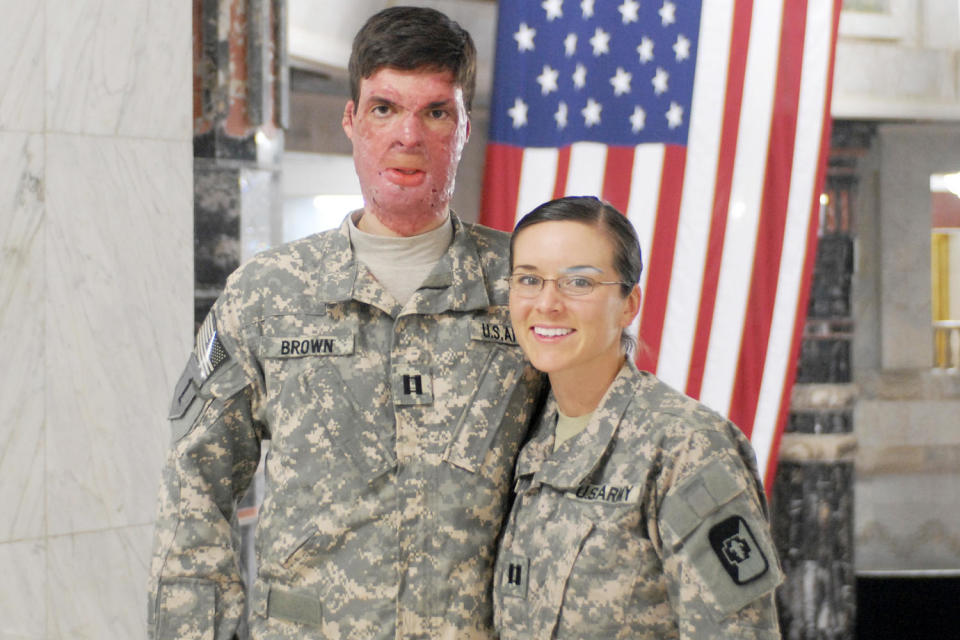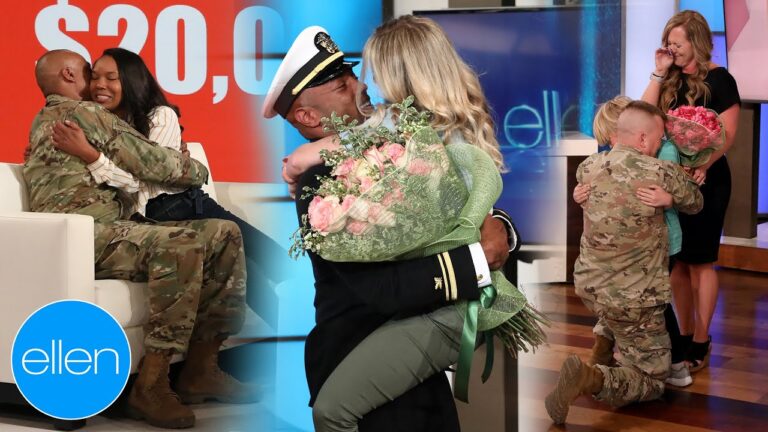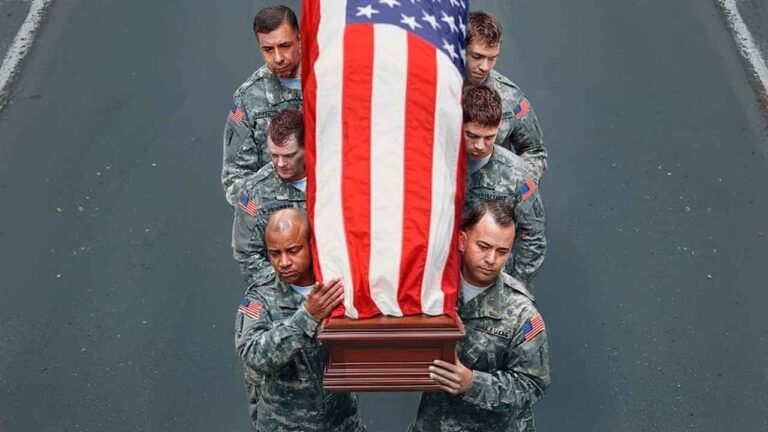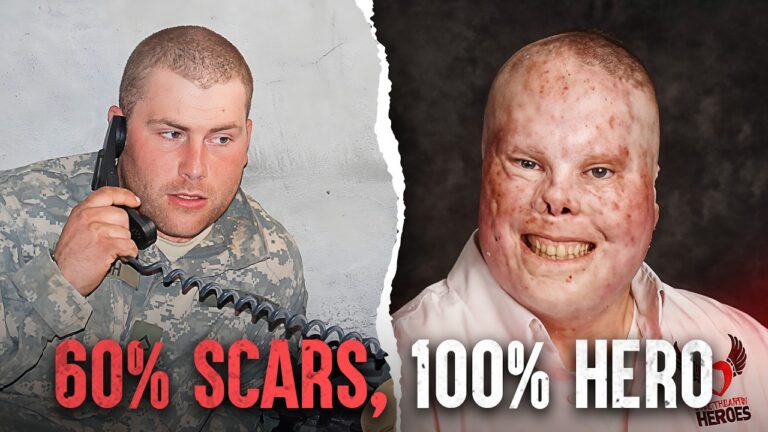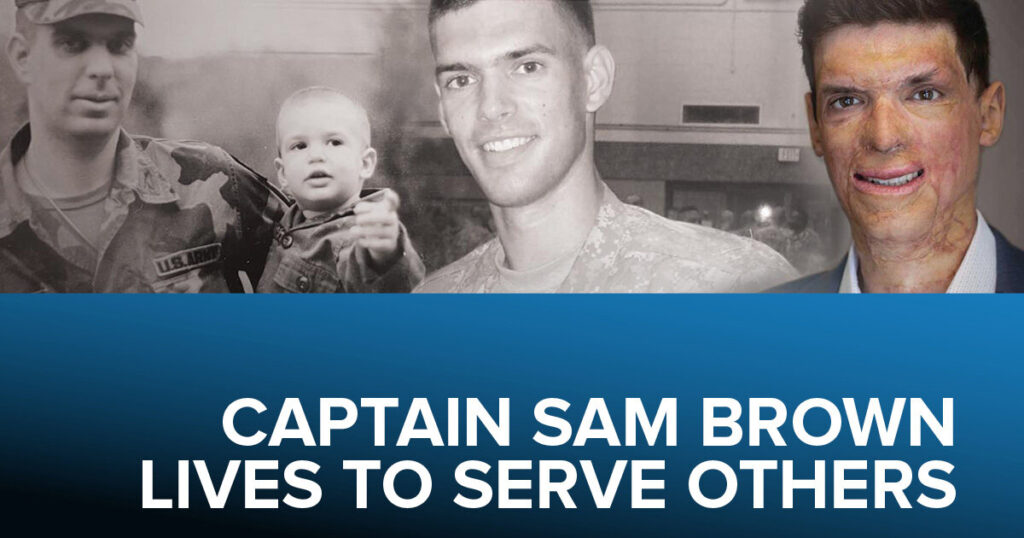
When Capt. Sam Brown was injured in Afghanistan, he watched the future he had meticulously planned crumble before his eyes. What he didn’t realize was that this harrowing experience would lead him to a discovery he thought was out of reach: the love of his life.
“I had everything mapped out—a thriving career, and a few years later, I’d find a beautiful woman, settle down, and start a family,” Brown reflected. “When I got injured, I thought all of that was gone.”
In September 2008, Brown was conducting route security in Kandahar, Afghanistan, when his unit came under indirect fire, escalating into direct attacks from multiple directions. As he moved to assist Soldiers in nearby M1151 humvees, Brown entered an enemy engagement zone and was struck by an improvised explosive device (IED).
“It was chaos for the next 15 to 20 minutes,” Brown recounted. “The humvee was on fire, and so was I.”
Brown sustained third-degree burns on 30% of his body, primarily in areas unprotected by his body armor. He also lost his left index finger. Evacuated back to the United States, he was treated at Brooke Army Medical Center (BAMC) in San Antonio, Texas, home to the Army Burn Center.
At BAMC, doctors performed multiple surgeries to repair his charred skin with grafts from unaffected areas. Although 30% of his body had been burned, the grafts meant that 85% of his body bore the scars of his recovery.
“I’ve had 15 surgeries so far, with another planned to improve the range of motion in my hand,” Brown said. “My full recovery could still take two years.”
During this challenging period, Brown was introduced to 1st Lt. Amy Larsen, a dietitian assigned to help him manage the weight fluctuations common among burn victims. From their very first interactions in November 2008, Amy left an impression on him.
When Brown was cleared for convalescent leave, Amy ensured he had all the supplements he needed, arranging shipments and checking in weekly.

“When she called, I’d try to make small talk, but she was all business,” Brown said with a smile.
Despite mutual feelings, their budding connection remained professional until a chance encounter during one of Brown’s follow-up surgeries. With encouragement from a mutual acquaintance, Brown reached out to Amy, and their friendship quickly deepened into something more.
Their first date—a rodeo—marked the beginning of a whirlwind romance. “I had to make sure it was okay professionally before agreeing,” Amy recalled. “But once we went, I had an amazing time.”
By March, they were dating; a month later, they were engaged. In May, they exchanged vows, with Amy Larsen becoming Amy Brown.
“It all happened quickly, but we prayed about it and knew God would be at the center of our relationship,” Amy explained. “That was the most important thing.”
Brown echoed her sentiment. “I wouldn’t recommend marrying so quickly unless you’re certain it’s right. For us, it was.”

Just months after their wedding, Amy deployed to Contingency Operating Base Speicher in Iraq as a dietitian supporting U.S. bases in the region. Despite the distance, the couple reunited in December, thanks to Operation Proper Exit, a program offering injured servicemembers the chance to revisit deployment zones for closure.
Though Brown’s injuries occurred in Afghanistan, he joined the program to share his journey with active-duty troops. Now, he plans to serve as a mentor for others participating in the initiative, helping wounded warriors find purpose and healing.

“I may not be running missions like I used to, but I want to give back. I want to inspire others and do something meaningful,” Brown said.
While his dream of serving as a Ranger is no longer attainable, Brown found something equally significant—a loving wife and a future filled with hope.

